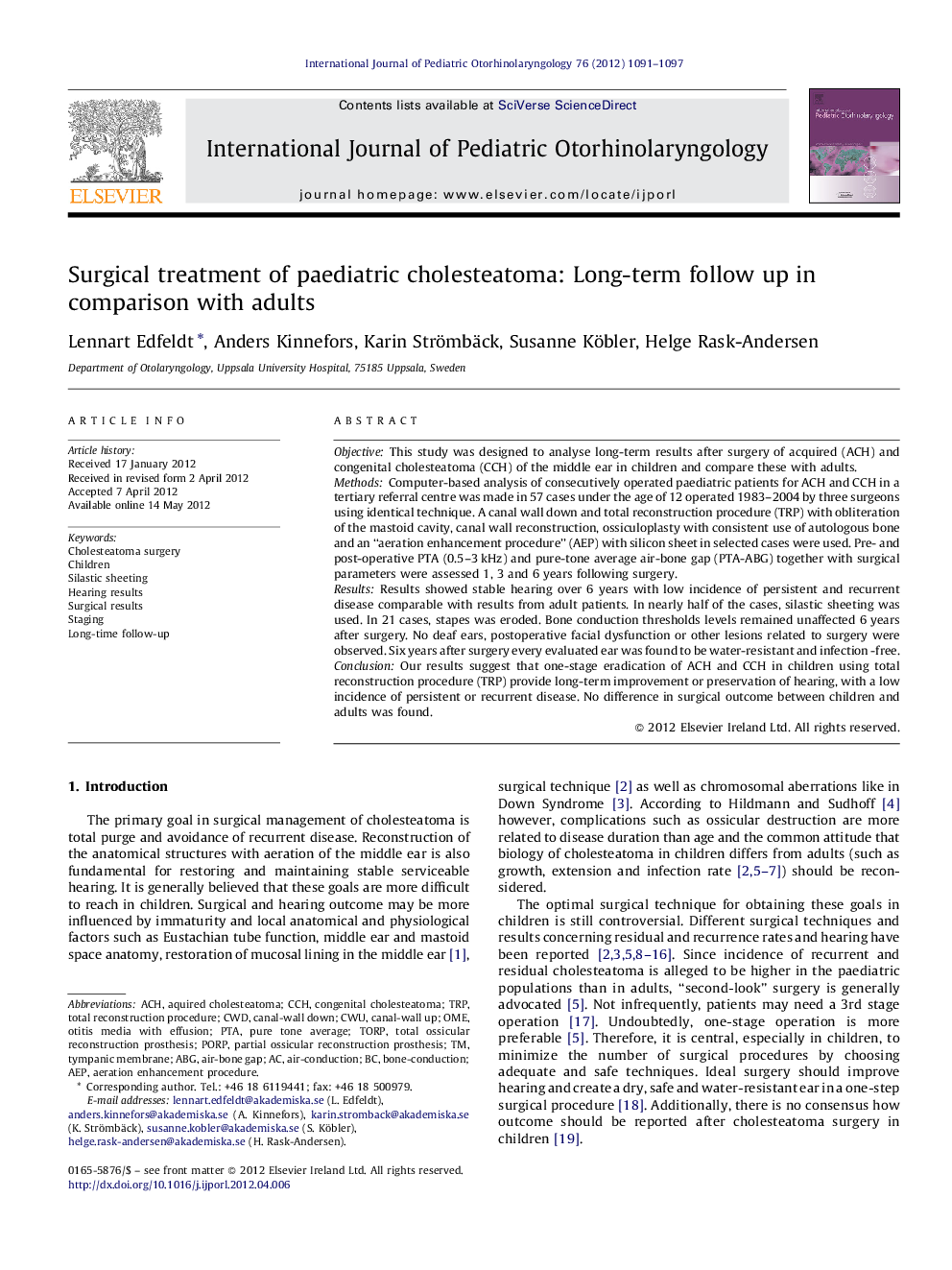| Article ID | Journal | Published Year | Pages | File Type |
|---|---|---|---|---|
| 4112678 | International Journal of Pediatric Otorhinolaryngology | 2012 | 7 Pages |
ObjectiveThis study was designed to analyse long-term results after surgery of acquired (ACH) and congenital cholesteatoma (CCH) of the middle ear in children and compare these with adults.MethodsComputer-based analysis of consecutively operated paediatric patients for ACH and CCH in a tertiary referral centre was made in 57 cases under the age of 12 operated 1983–2004 by three surgeons using identical technique. A canal wall down and total reconstruction procedure (TRP) with obliteration of the mastoid cavity, canal wall reconstruction, ossiculoplasty with consistent use of autologous bone and an “aeration enhancement procedure” (AEP) with silicon sheet in selected cases were used. Pre- and post-operative PTA (0.5–3 kHz) and pure-tone average air-bone gap (PTA-ABG) together with surgical parameters were assessed 1, 3 and 6 years following surgery.ResultsResults showed stable hearing over 6 years with low incidence of persistent and recurrent disease comparable with results from adult patients. In nearly half of the cases, silastic sheeting was used. In 21 cases, stapes was eroded. Bone conduction thresholds levels remained unaffected 6 years after surgery. No deaf ears, postoperative facial dysfunction or other lesions related to surgery were observed. Six years after surgery every evaluated ear was found to be water-resistant and infection -free.ConclusionOur results suggest that one-stage eradication of ACH and CCH in children using total reconstruction procedure (TRP) provide long-term improvement or preservation of hearing, with a low incidence of persistent or recurrent disease. No difference in surgical outcome between children and adults was found.
